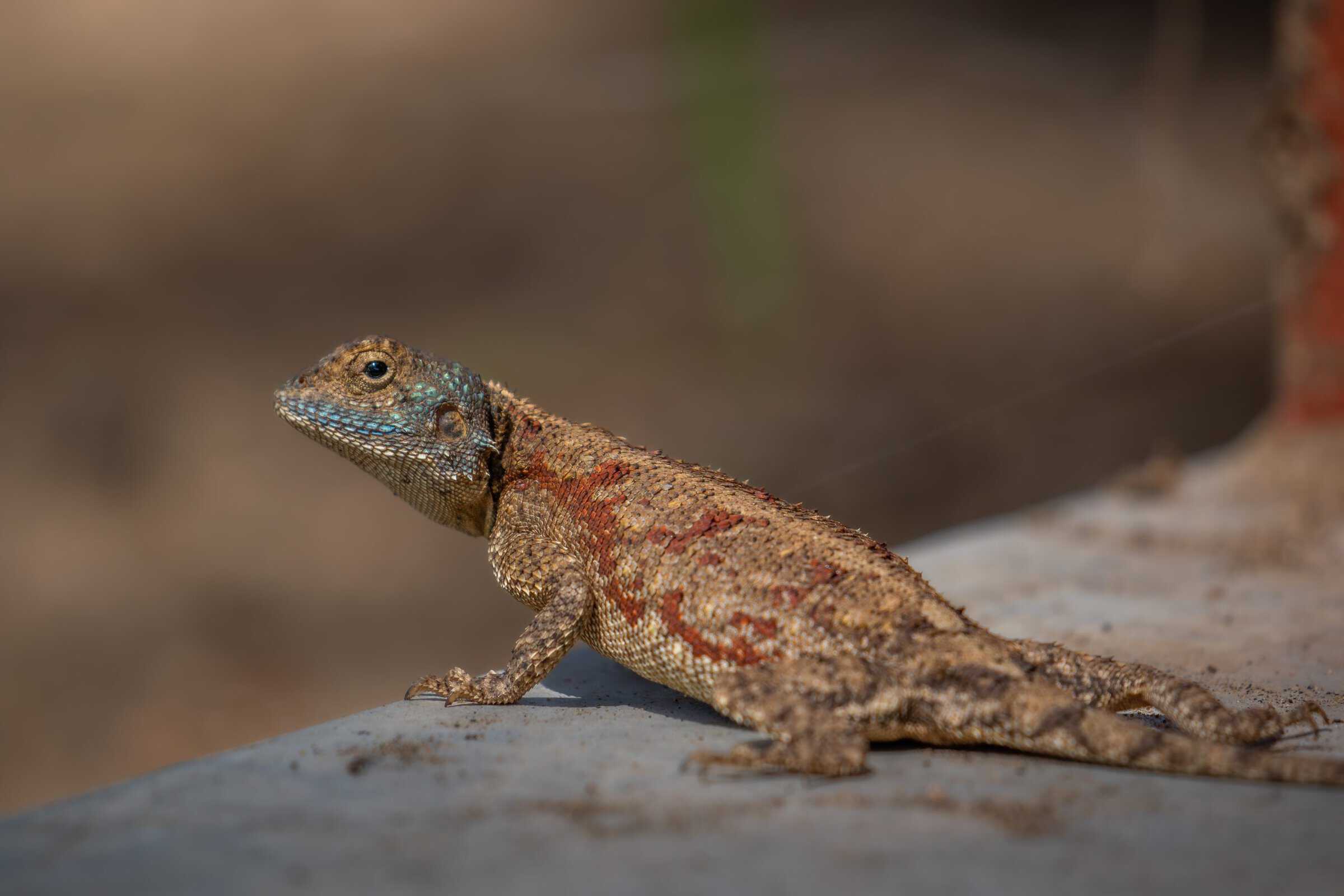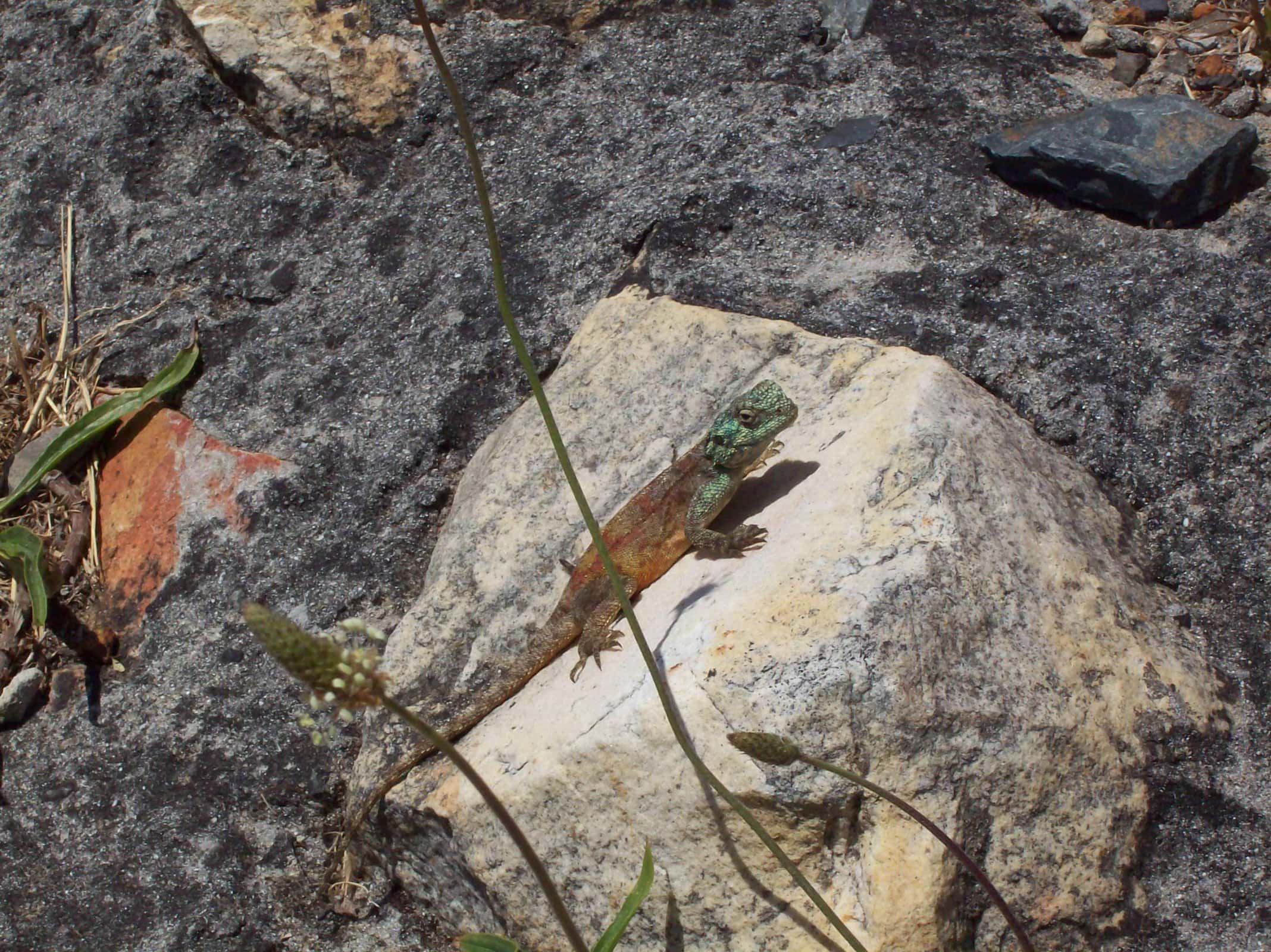Footage for previous installments of Nature’s Corner was provided by Kate and André of Two-V Productions. Their YouTube channel and Facebook page contain beautiful material obtained during their visits to the Kruger National Park. Books in their Op Vlerke series are available in Afrikaans only and can be found online and in the shops in rest camps of the Kruger.
This week André describes the encounter Kate and he had with an agama in their own yard:
A day or two ago, shortly before lunch, Kate peeked out to the pool at the side of the house to see if everything is still in order there. Just before turning back, she noticed something in the water at the outlet of the pool. At first she thought that it was a leaf, but upon walking closer she realised that it was in fact a huge blue-headed agama, floating on its side.
She took a branch of a shrub lying on the ground close by and stuck it in the water to check if he was still alive. He turned slowly, belly down, with a few faint and laboured strokes.
I happened to peek out of the living room window at that stage, saw her approaching with the net which we use to scoop leaves from the pool, lowering it into the water. I walked outside, arriving just in time to see her lifting the blue net out of the water with the agama in it.
She lowered the net into a bed next to the house in which an impala lily, spekboom and hen and chicks grow, turning it at an angle to help him to climb out, but he hung on, did not stir, peeking out only.
“Goodness,” I said to Kate, “it is a male, you can tell by the size of his body and head, strongly developed spines on his back and throat, but his whole body is dark in colour, his beautiful bright metallic colours are gone!”
“It must be because it is not summer yet, not mating and breeding time,” I continued. At those times and when agamas get excited, one may see the blue-purple flames that rise in their necks and faces.
An agama has a broad, flat head, a scaly, flat body, a tail that cannot be cast off easily, dull scales on the skin that are mostly pointed and often in the form of spines to form a comb on the back and tail, with small eyes provided with eyelids, very small incisors, canines and molars, and a short, broad tongue.
An agile diurnal animal.
But now this one was just sitting there on the net, legs splayed. Kate waited patiently, turning the net more diagonally, waiting. Later he slowly descended, sitting there with his body draped across the hen and chicks.
I stood watching from a few meters away. Kate also stepped back, watching with equal interest to see what he was going to do. Later she went to put the net away.
In the meantime, I looked at the pool and decided that I might as well top it up while waiting. I lowered one end of the garden hose into the water and turned on the tap.
When I returned to see what the agama was doing, he was no longer sitting there. I started looking for him …
The agama had left, he was gone!
The agama (Agama atra) is found throughout Southern Africa. Its diet includes insects, eggs and plant matter. Agamas are egg-laying reptiles that thrive in warm, rocky environments.
On the photo is an agama found above Simons Town.
Write to us
Photo: cheryl-jayaratne-unsplash






















